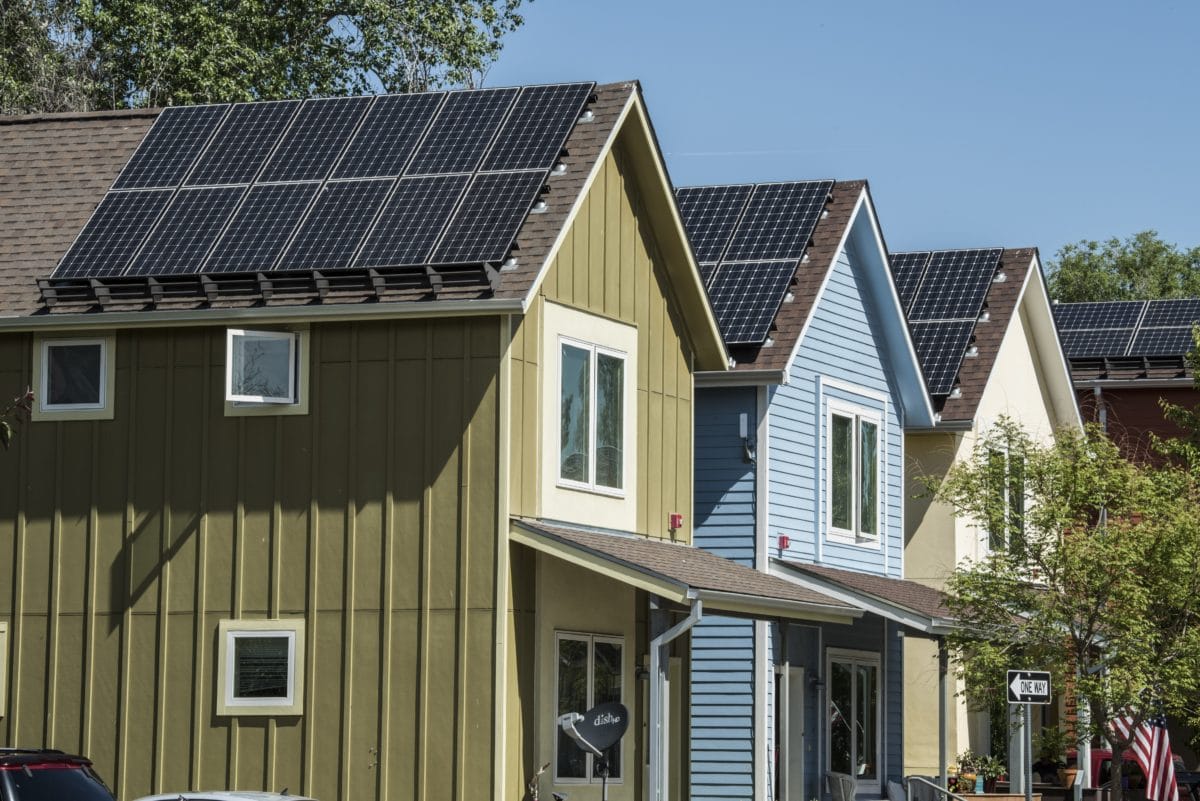Michigan utilities DTE Energy and Consumers Energy said they support raising — but not ending — a cap on rooftop solar that would boost the amount of solar power the utilities can buy from consumers with rooftop solar panels.
Local news reports said that since 2016, state energy law has imposed a 1% cap on how much solar power the utilities may buy from rooftop arrays. The actual amount is based on the utilities’ average peak load for the past five years.
House Bill 4236, introduced in February, would remove the 1% cap, which the utilities say creates a tax on most utility customers to benefit a smaller number of private solar users. As an alternative, the utilities are looking to raise the cap on rooftop solar by an unspecified amount and address the subsidy.
The utilities alleged that solar customers pay about 23% less than the average customer, but also use the grid more. The higher the cap, the utilities reportedly said, the higher the bills for the average customer.
LMI performance study
A Berkeley Lab report looked at the financial performance of a Connecticut Green Bank (CGB) solar leasing program, run in partnership with PosiGen, that targets low- and moderate-income customers. The report said that the program successfully reached underserved customers and had “reasonable repayment rates given the credit characteristics of the participants.”
The program reaches many more underserved customers than other PV financing programs in Connecticut. For example, most participants live in census tracts that have a median income of less than 80% of the area median income. In contrast, around 9% of participants in the other Green Bank solar financing programs live in these same census tracts.
And, the majority of participants (56%) in the program that was studied have FICO scores that would generally be considered non-prime (<670). That compared with 2% of participants in the other programs.
The report said that credit, not income, was the primary factor that explains participants’ financial performance. It found that delinquency and annualized losses were higher for PosiGen (2.3% and 0.9%) than for other Connecticut Green Bank programs (1.4% and 0.1%). Across all Green Bank programs, lower credit scores are associated with higher rates of delinquency and loss. Therefore, the report said, participants’ lower credit scores explain much of the program’s higher rates of delinquency and annualized losses.
The Berkeley Lab report said that PosiGen leases performed competitively with market-rate solar and non-solar leases and loans. When compared to securities backed by market-rate PV loans and leases with similar amounts of seasoning, the PosiGen leases had higher delinquency rates but comparable gross loss rates.
It said the similarity in losses is notable given that loss rates for PosiGen leases were higher than those of the other Connecticut Green Bank leases and loans. Rather than the PosiGen leases having high loss rates, other CGB leases and loans had unusually low loss rates.
Comparing PosiGen to non-solar benchmarks, including indices of auto and consumer loans, the report found that the PosiGen leases had “significantly less delinquency” than non-prime auto loans, and had performance comparable to many consumer loans.
Renewables were a bright spot in 2020
Energy production in the United States fell to just below 96 quadrillion British thermal units (quads) in 2020, down more than 5% from 2019’s record high, according to the Energy Department’s Energy Information Administration (EIA).
The drop from 101.3 quads in 2019 to 95.8 quads in 2020 marked the largest annual decrease in U.S. energy production on record. Economic responses to the COVID-19 pandemic that began during the spring of 2020 drove most of this decrease, EIA said.
Between 2019 and 2020, U.S. coal production fell by 25% to less than 11 quads, its largest annual decrease on record. U.S. coal production in 2020 was less than half what it was at its peak in 1998 as natural gas and renewable sources increased their shares in the electricity generation mix over the years, displacing coal.
U.S. renewable energy production rose 2% between 2019 and 2020 to a record-high 11.8 quads in 2020, EIA said, primarily due to increased electricity generation from wind and solar. In 2019, U.S. renewable energy production surpassed U.S. coal production for the first time. Wind energy production rose by 14% to 3 quads, and U.S. solar energy production grew by 23% to 1.2 quads. U.S. hydroelectric and geothermal energy production stayed flat, while biomass production, including biofuels and wood, fell 8%.
This content is protected by copyright and may not be reused. If you want to cooperate with us and would like to reuse some of our content, please contact: editors@pv-magazine.com.









“The utilities alleged that solar customers pay about 23% less than the average customer, but also use the grid more. The higher the cap, the utilities reportedly said, the higher the bills for the average customer.”
Of course solar customers pay less – they are generating their own electricity.
As has been shown time and again by studies the rest of it is just BS from the utilities to keep their profits up.